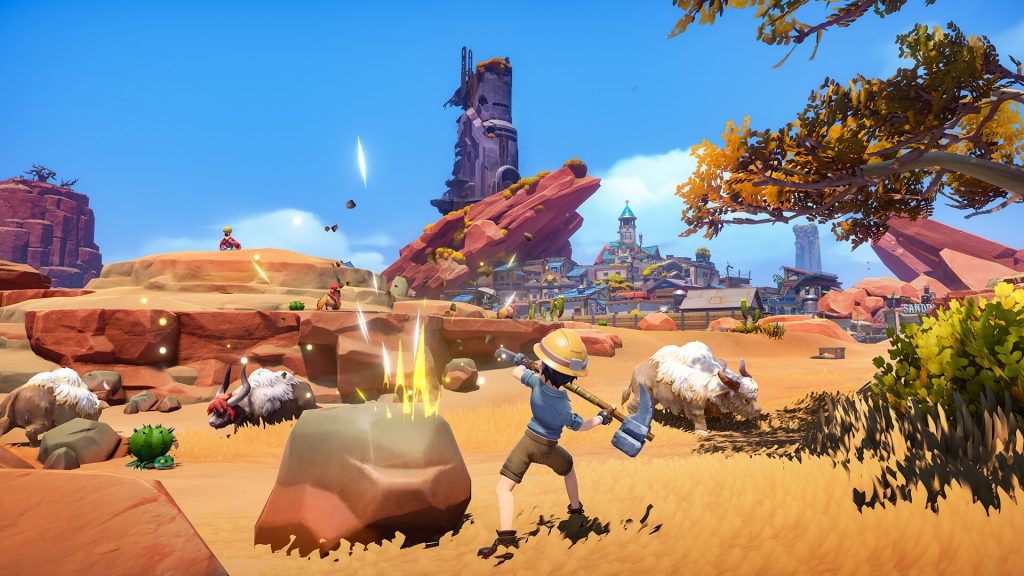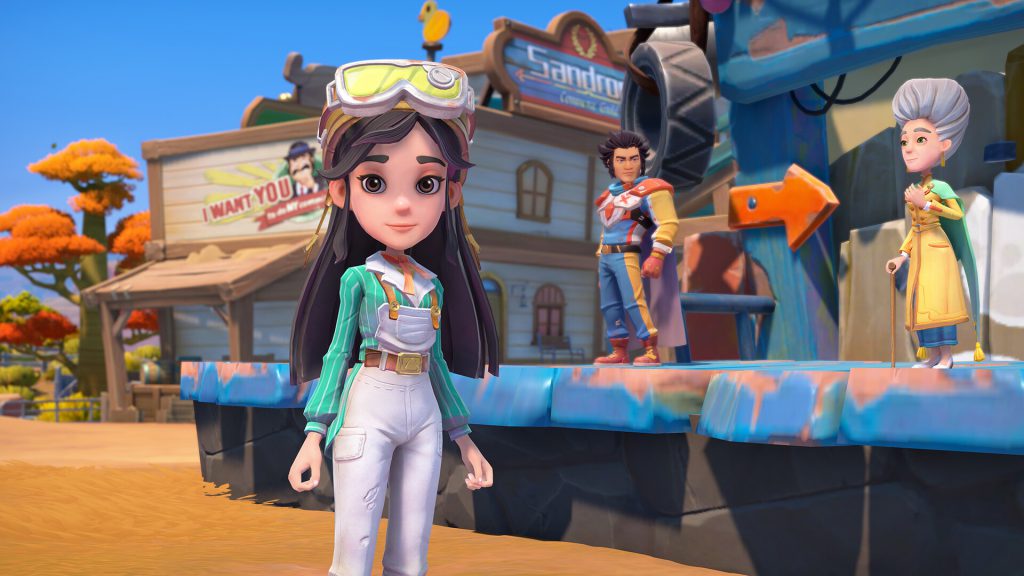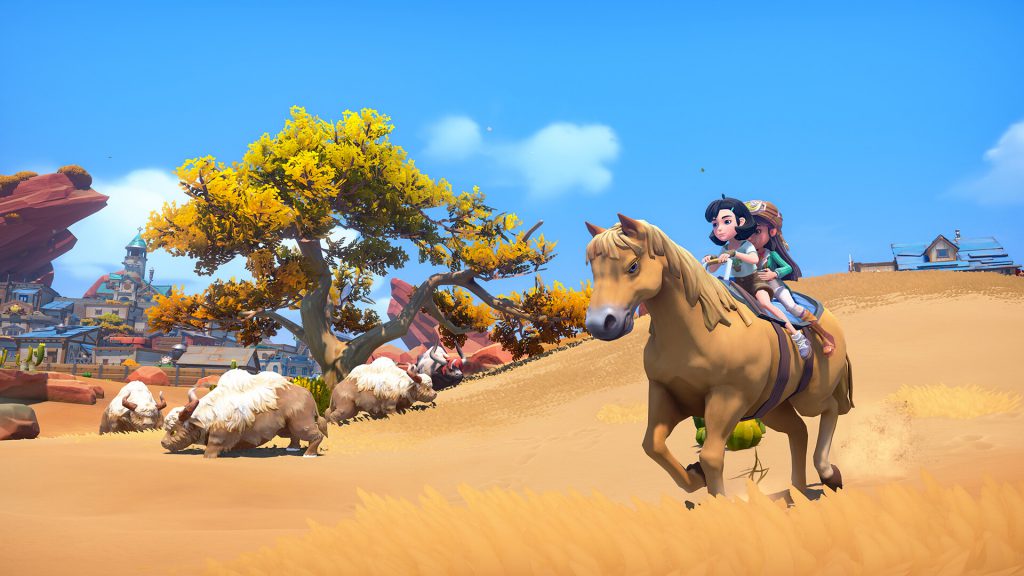My Time At Sandrock successfully builds on Pathea’s sandbox formula
My Time at Sandrock is a sandbox story-oriented RPG freshly released by Pathea Games, whose name you might recognise from their previous titles; Ever Forward, Planet Explorers and sister game My Time at Portia.
Within My Time at Sandrock, you’re introduced to a run-down desert town called Sandrock where your main role is the town’s new builder. Responsible for the town’s recovery from the jaws of economic ruin, you’ll find yourself taking on commissions for both the townspeople and for the town itself. Whether it be repairing the damage caused by the infamous Logan, or providing various materials for the residents of Sandrock, you’ll never find yourself at a loss for what to do next.
However, if just filling commissions doesn’t sound appealing by itself, My Time at Sandrock also boasts a combat system with various types of weapons, minigames, and an in-depth decoration system to really make your workshop feel like your own. Players of My Time at Sandrock may be reminded of other games in the RPG/sandbox genre, such as Stardew Valley, Minecraft, the newly released Palia and of course, My Time at Portia: The feeling of community and making a difference to a town is very reminiscent of Stardew Valley, with the combat, mining and open world-ness of Minecraft and the cozyness of Palia.
My Time at Sandrock feels like a natural successor to My Time at Portia as a lot of the systems in the first game made it over to the second, but feel so much more refined and improved upon. As someone with just over 300 hours in Portia, and having completed the full storyline, naturally, I was excited for the next game in the series, especially by seeing what they were working on throughout the Kickstarter scheme.
And let me just say, Sandrock does not disappoint.

The art style, the story and the characters have had a lot of time put into them and it shows. It somehow managed to capture everything that the first game did well, and still improve upon it. That’s not even mentioning the new mechanics present in this game. As to be expected, living in a desert comes with its own challenges, especially around what natural resources are available, such as water, wood and plant life. Chopping trees is mostly forbidden in this game, with a few exceptions and with water being such a scarce resource, you’re left to either make numerous dew collectors, or buy it from the town as your machines rely on both water and fuel to work.
You may think that this would be frustrating to work with, but Pathea has done a great job in making this feature one that doesn’t hinder your gameplay, but actually makes each commission completed feel like a job well done. Another one of Sandrock’s challenges is the harsh desert setting. As can be expected, the desert is filled with many environmental dangers with one such danger being the harsh weather. Players can expect to occasionally be met with sandstorms that will ravage the town, including your workshop, causing anything not nailed down to be sent flying across the desert. Players may find themselves running in the direction of the wind trying to recover lost resources before they lose them forever.

One really strong point in My Time at Sandrock is the relationship mechanic. With 39 NPC’s to build friendships with, and 21 of those being romanceable, players are bound to find a character they can connect with, and potentially even get married to! Sandrock does a great job of creating unique characters that stand out from one another and have distinct personalities and backgrounds. When building relationships with each of the NPCs, you’ll discover that there are certain perks to be unlocked. From stat boosts to presents, there is a great incentive to become friends with everyone in the town.
Each NPC has their own preferred gifts that players can discover by becoming closer to them, and these can be used to further progress in developing friendships and romance. However, this isn’t the only way to build relationships, with playdates and plain old dating also featured. Performing well in each of these activities will reward the player a hefty boost to their relationship progress. Performance in these various dates vary from character to character, as each has their own preferences on what activities they enjoy, with some characters enjoying Whac-A-Mole, while others may prefer Sand Painting, or even taking a ride on the cable car!

Overall, I believe that My Time at Sandrock is an amazing addition to the sandbox/RPG scene and it’s clear that Pathea Games has spent a lot of time making this game everything that the original My Time at Portia players would want and more. I would highly recommend this game to any enjoyers of the genre, and even to any newcomers as it’s a stress-free, relaxing game that players can take at their own pace. And with a large variety of guidance already online due to its already growing, dedicated userbase, if players need any assistance with gameplay elements, they are sure to find the answers with a simple search.
My Time at Sandrock is available now for Windows PC through both Steam and Epic stores, as well as Xbox, Nintendo Switch and Playstation.
Comments are closed.